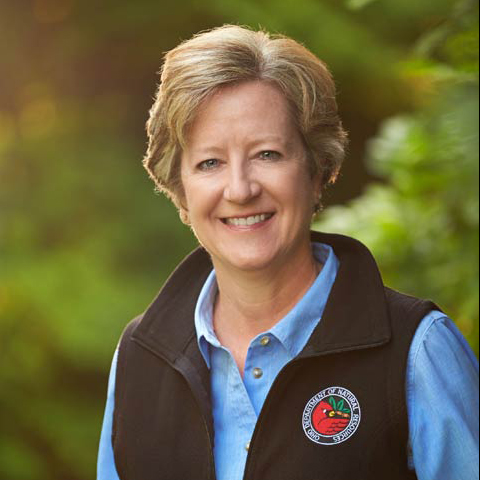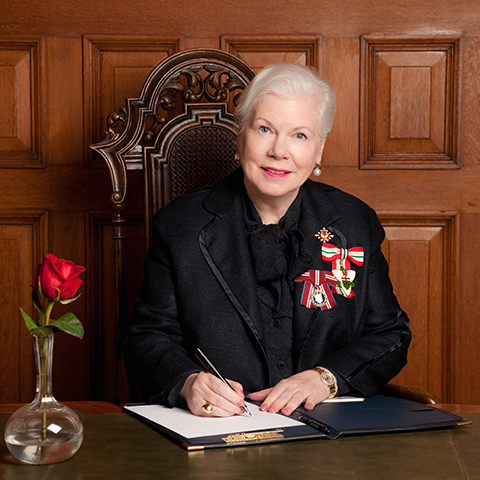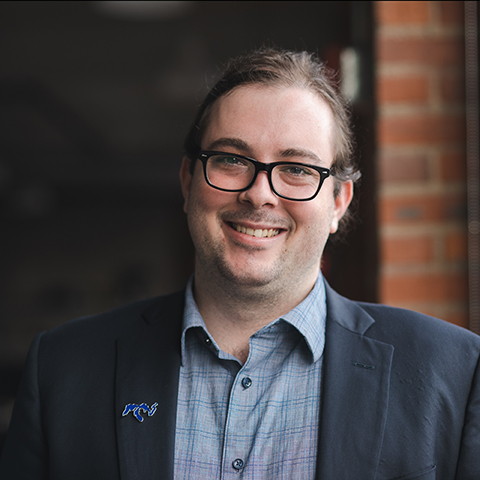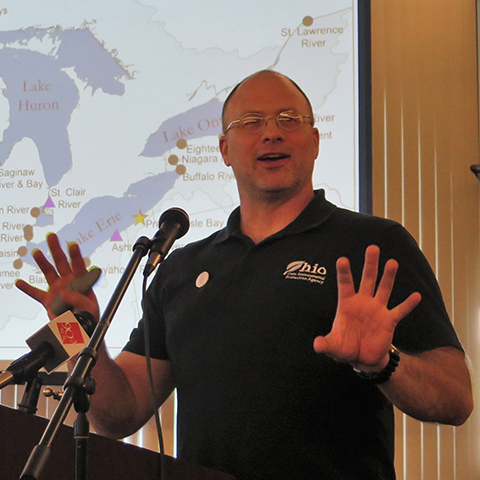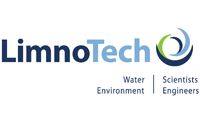Wednesday, March 16
All times are Eastern Daylight Time
Registration Check-in - Networking - Exhibits | 7:15 a.m.
Coffee and tea available
|
Welcome | 8–8:45 a.m.
Ed Verhamme
Past President, International Association for Great Lakes Research
Henry Lickers
Canadian Commissioner, International Joint Commission
Haudenosaunee citizen of the Seneca Nation, Turtle Clan
Mary Mertz
Director, Ohio Department of Natural Resources
|
Concurrent Sessions | 8:45 a.m.–12:15
10:15–10:30 a.m. - Break | Exhibits open | Snacks available
Superior A
- Monitoring and progress in the St. Clair‐Detroit River system | 8:45 Chairs: Robin DeBruyne, Justin Chiotti, Michelle Selzer
Veterans CD
- Lake Erie Harmful and Nuisance Algal Blooms + Panel | 8:45 Chairs: Mary Anne Evans, Mike Murray, Dave Depew
Superior B
- Insights on Lake Erie Emerging Contaminants of Concern | 8:45 Chairs: Jill Bartolotta, Sarah Lowe, John Lenhart
- State of Smart Lake Erie: Innovation, collaboration, and entrepreneurship for a Great Lake | 10:30 Chairs: Max Herzog, Ed Verhamme
|
Buffet Lunch / Exhibits | 12:15–1 p.m.
|
Plenary | 1–2 p.m.
The Great Lakes and the GLRI : Past, Present, and (Mostly) Future
Chris Korleski
Director, U.S. EPA Great Lakes National Program Office
|
Concurrent Sessions | 2–6 p.m.
3:45–4 p.m. - Break | Exhibits open | Snacks available
Superior A
- Monitoring and progress in the St. Clair‐Detroit River system, cont'd | 2:00 Chairs: Robin DeBruyne, Justin Chiotti, Michelle Selzer
- Remediation to restoration to revitalization: Examining the current state of Lake Erie Areas of Concern | 4:30 Chairs: Scott Hardy, Lynn Garrity, Bryan Stubbs
Veterans CD
- State of community science: Credible data and innovative partnerships | 2:00 Chairs: Max Herzog, Jon Bratton
- Lake Erie hypoxia: State of the science and approaches to track future progress | 4:00 Chairs: Craig Stow, Mike McKay, Casey Goodwin
Superior B
- State of Smart Lake Erie, cont'd | 2:00 Chairs: Max Herzog, Ed Verhamme
- Ecological modeling of Lake Erie | 4:00 Chairs: Reza Valipourn Mark Rowe
|
Poster Session | 6:15 p.m.
Appetizers and cash bar
|
Thursday, March 17
All times are Eastern Daylight Time
Registration Check-in - Networking - Exhibits | 7:15 a.m.
Coffee and tea available
|
Welcome | 8:15–8:45 a.m.
|
Concurrent Sessions | 8:45 a.m.–12:15
10:15–10:30 a.m. - Break | Exhibits open | Snacks available
Superior A
- A systems view of Lake Erie Biogeochemistry | 8:45 Chairs: Brice Grunert, Fasong Yuan
- Lake Erie Field Year 2019 results–Cooperative Science and Monitoring Initiative (CSMI) | 9:45 Chairs: Kristen Fussell, Christopher Winslow, Paris Collingsworth
Veterans CD
- Living Lab Ontario–part of the Canadian Agroecosystem Living Laboratories network | 8:45 Chairs: Pamela Joosse, Chris Parsons
- Lake Erie Literacy and Education | 9:45 Chairs: Lyndsey Manzo, Kristin TePas, Angela Greene
- Community Science and Outreach | 11:00 Chair: Amy B. Alford
Superior B
- Building a Lake Erie monitoring program to inform biological condition | 8:45 Chairs: Douglas Kane, James Watkins, Lyubov Burlakova
|
Buffet Lunch / Exhibits | 12:15–1 p.m.
|
Plenary | 1–2 p.m.
Plenary: The Cuyahoga River: From Flame to Fame
Bill Zawiski
Water Quality Group Supervisor, Ohio Environmental Protection Agency
Wrap-Up
Ed Verhamme
Past President, International Association for Great Lakes Research
Closing
Henry Lickers
Canadian Commissioner, International Joint Commission
Haudenosaunee citizen of the Seneca Nation, Turtle Clan.
|
Concurrent Sessions | 2–6 p.m.
3:45–4 p.m. - Break | Exhibits open | Snacks available
Superior A
- CSMI, cont'd | 2:00 Chairs: Kristen Fussell, Christopher Winslow, Paris Collingsworth
Veterans CD
- Community Science and Outreach, cont'd | 2:00 Chair: Amy B. Alford
- Agricultural practices and water quality | 4:00 Chairs: Khandakar R. Islam, Arif Rahman
Superior B
- Building a Lake Erie monitoring program, cont'd | 2:00 Chairs: Douglas Kane, James Watkins, Lyubov Burlakova
- Designing and evaluating wetlands to optimize environmental and ecological benefits | 2:45 Chairs: Lauren Kinsman-Costello, Janice Kerns, Laura Johnson
|
On Demand
Virtual Field Trip
The State of Lake Erie 4,000 years ago- geological & archaeological evidence
Francine McCarthy, Nick Riddick, and John Ross Macdonald, Brock University
The mean level of Lake Erie was approximately 4 meters higher around 4,000 years ago, as drainage from the Upper Great Lakes was transferred to the St. Clair–Detroit Rivers from the earlier Mattawa–Ottawa River outlet. Indigenous inhabitants of coastal Lake Erie would have benefitted from extensive wetlands with agitated water that were ideal environments for wild rice during this ‘Nipissing Flood’ event that spanned several centuries around the Middle-Late Holocene boundary. Harvesting this resource was presumably the raison d'être of the Fitzgerald Site, associated with “Non-Meadowood Early Woodland” artifacts (Parker, 1997). This unassuming site is approximately 7 meters above the modern level of Lake Erie and ca. ½ kilometer from the modern shoreline on the Haldimand Clay Plain. The Early Woodland site would have been on the northeastern shore of a much larger paleo-Cates Creek embayment when abundant plant macrofossils and pollen of this cereal grass were found in sediments dated around 4,800–3,700 calibrated years ago (Pengelly et al., 1997).
This virtual tour will examine evidence of occupation of the Fitzgerald Site and questions archaeological estimates of its age, since it would have been far from the Lake Erie shoreline following the sharp decline in lake level attributed to erosion of the Lyell/Johnson Sill around 2,900 years ago. Extensive wild rice-hosting wetlands had long disappeared from this region by the latest reported dates for Early Woodland lithic assemblages, suggesting that this culture extends nearly a millennium earlier than previously thought (MacDonald et al., this conference).




